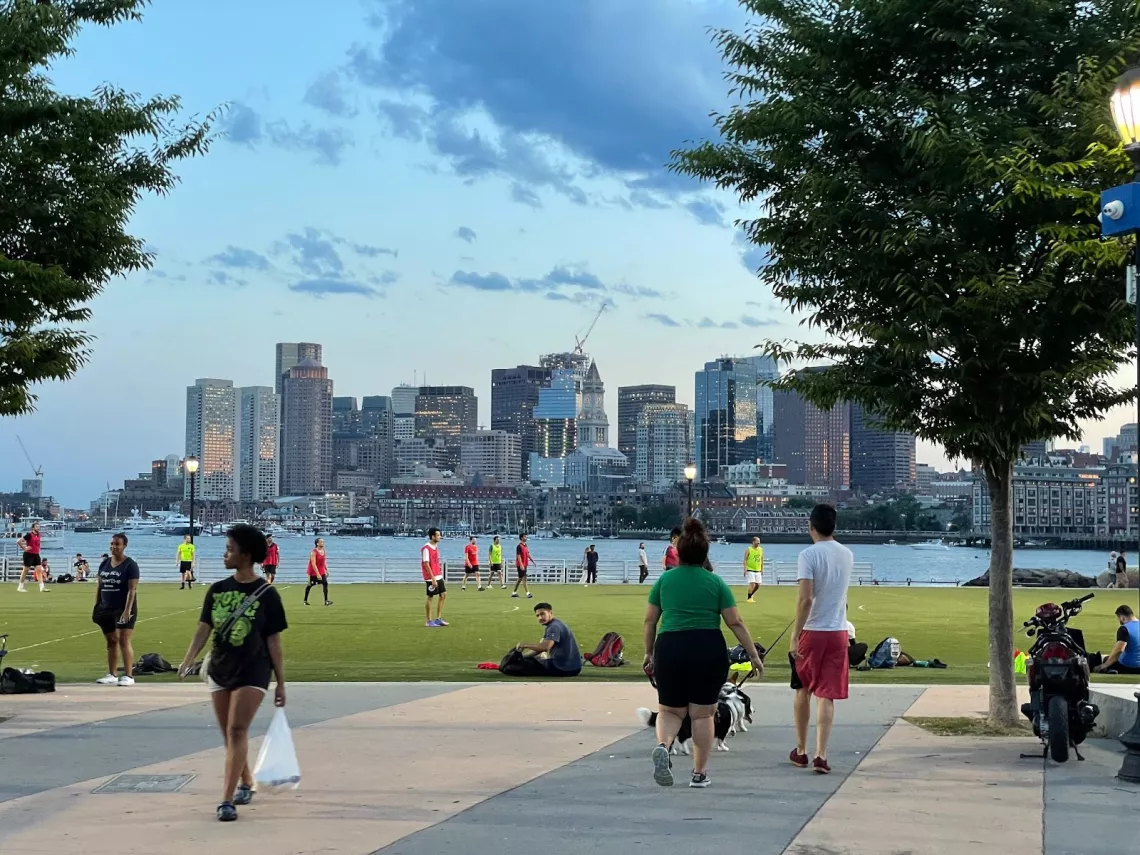By Andrew Huang

Photo credit: Andrew Huang
Massachusetts is on its way to becoming one of the first states to have a net-zero economy by 2050. One way our state is achieving this goal is through a specialized stretch code, required as per last year’s climate roadmap law.
The Significance of the Specialized Stretch Code
Seen as one of the more controversial aspects of the law, Governor Baker initially vetoed the creation of a new stretch code in the 2021 Next Generation Climate Roadmap. The Governor expressed concern in a five-page response that the code would drive up costs of the construction of new homes, despite evidence to the contrary. After the Governor delayed passage with his veto, the legislature eventually overruled him and signed into law the Roadmap bill, that gave the Department of Energy Resources (DOER) the power to create a “municipal opt-in specialized stretch energy code” and a definition of a “net-zero building.” Thus ,the legislature paved the way for Massachusetts cities and towns to adopt new, standardized net-zero codes for new and renovated developments.
The Baker Administration is leaving at the end of 2022 as Baker stated he is not running for reelection. The administration’s DOER is tasked with creating the new stretch code by the end of 2022. Due to this, there will be no possibility of electoral repercussions for the stretch code his administration develops. Meanwhile, the administration’s disinterest in removing fossil fuels from new buildings remains.
A glimpse of the administration’s lack of responsibility and action on climate justice can be seen in East Boston as pollution worsens from Logan Airport, industrial shipping, and trucking. Eastie comprises over 70% minority communities, and climate injustice is more prevalent than ever. The new opt-in stretch code proposes an update to residential homes by lowering the Home Energy Rating System (HERS) from HERS 55 to HERS 42 for homes heated by fossil fuels and HERS 45 for homes heated by electricity. A lower HERS index score indicates greater energy efficiency, lower energy costs, and more comfortable living conditions. In a community where rising levels of pollution correlate to increased gentrification, we need to prioritize this net zero stretch code to provide energy-efficient affordable housing and combat the climate crisis.
Understanding Building Codes
Building codes are a set of rules that specify the construction standards for buildings. New developments must follow this code to acquire permission to build. Stretch codes are locally mandated codes or an alternative standard that is more stringent than the normal, or “base”, code. Stretch codes help new construction achieve higher energy savings.
Massachusetts cities and towns have the choice of following the state’s base energy code or the stretch energy code. As of a few months ago, 299 out of 351 municipalities have adopted the latter.
These building codes establish the minimum design and construction requirements to ensure safe and efficient structures. While these codes reduce casualties, costs, and damage by creating stronger buildings designed to withstand disasters, it also reduces unnecessary energy spending, can make homes more comfortable, and can even save money.
As of 2018, buildings emissions account for approximately 40% of Massachusetts emissions. These emissions come from the burning of fossil fuels, such as propane and fracked gas (commonly known as “natural” gas), to heat, cook, and run our appliances. A real-time dashboard from ISO New England reveals that in our region, as of August 8th at 7:52 AM, 71% of our electricity fuel mix is composed of natural gas.

Massachusetts’ current stretch code sets energy performance targets for new buildings that are more stringent than the base code, focusing less on prescriptive requirements than does the base code. If a municipality votes to adopt the new code, it will take effect for new permits beginning six months after.
Municipalities will soon have three options for energy codes:
- Base energy code
- Stretch energy code
- Net Zero “Specialized Stretch” Code
Next Steps
To achieve statewide carbon neutrality per the Global Warming Solutions Act, we must reduce our emissions from 1990 levels of at least 50% by 2030 and at least 75% by 2040, ultimately becoming net-zero by 2050.
The current draft of the new code is not up to the standard of sustainable development—fracked gas and fossil fuels should be out of all Massachusetts buildings. A more stringent, “stretchier” stretch code devoid of fossil fuels and environmental injustice is critical in moving our Commonwealth to achieve statewide carbon neutrality and in ensuring that no community is left behind. Let’s support municipalities in meeting or exceeding these emission reduction goals.
Learn more:
- Net Zero Buildings Myths vs Facts | nationbuilder.com
- Net Zero Buildings Info Sheet | sierraclub.org
References:
- Built Environment Plus’s The Road to Net Zero
- Summary of State Building Energy Codes | mass.gov
- Boston's Carbon Emissions | boston.gov
- Net Zero Stretch Code Framework | drive.google.com
- Stretch Energy Code Development 2022 | mass.gov
- Summary of Proposed New 225 CMR 22.00 and 23.00 | mass.gov
- Charlie Baker Not Running For Reelection | npr.org
- Senate Bill No. 2995 | malegislature.gov
- New England Electricity Dashboard | iso-ne.com